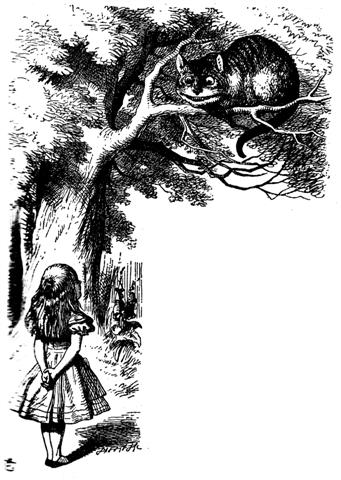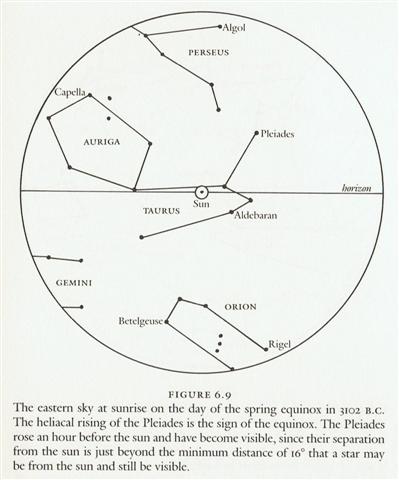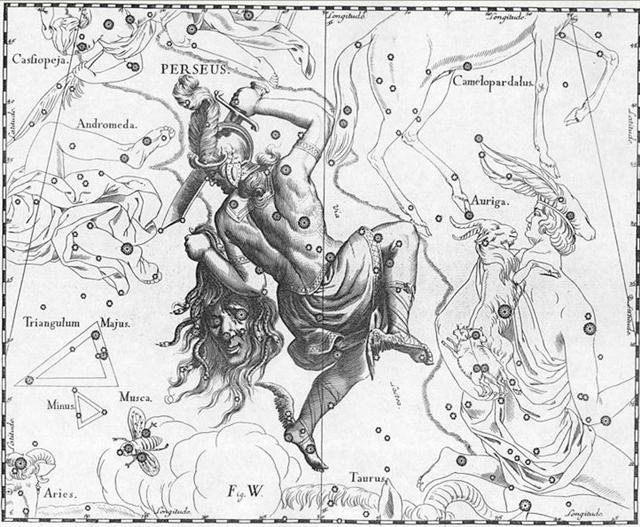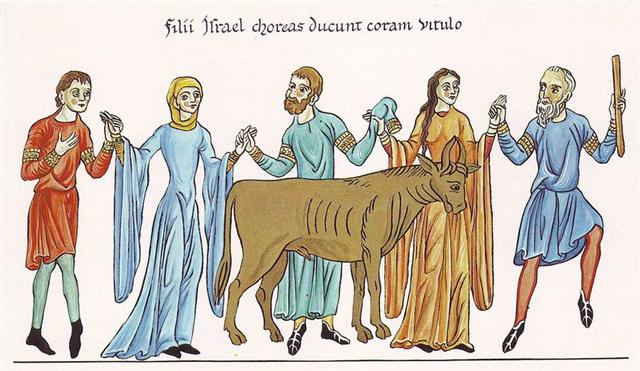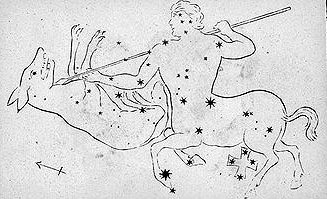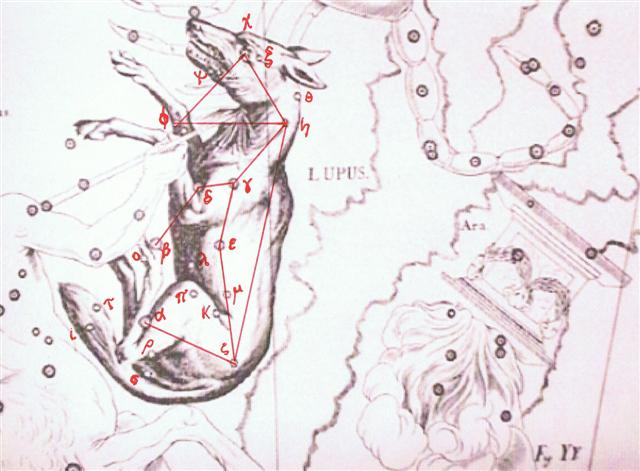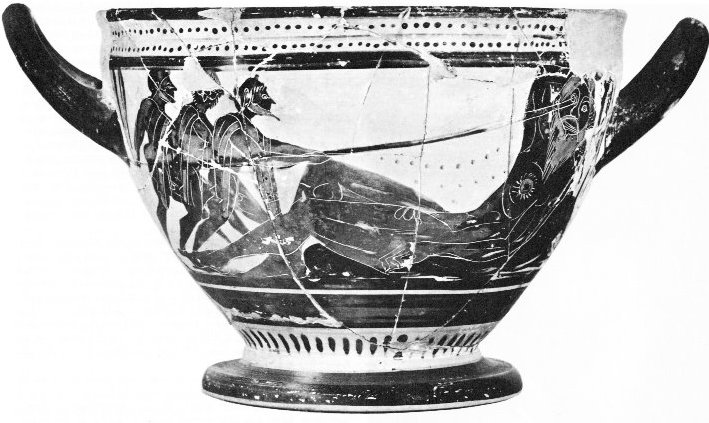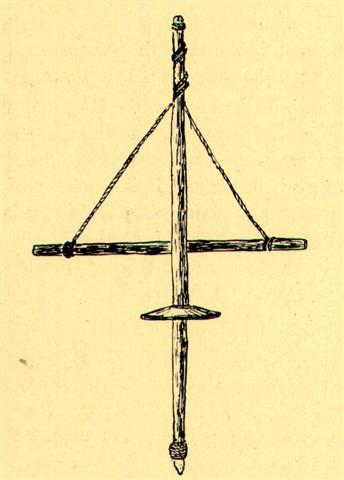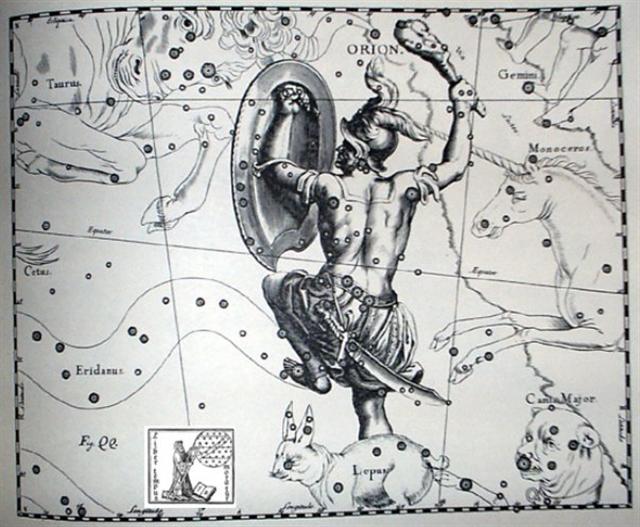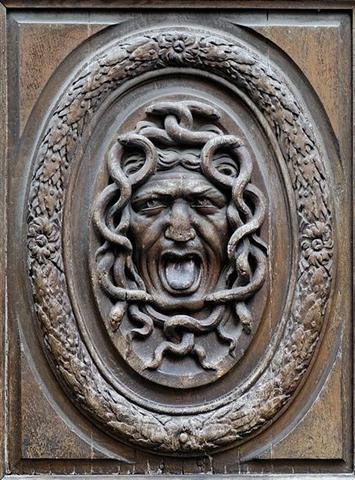Once again. According to the G text neither the hand in front nor the hand behind were visible:
For at the time of the Bull the rays from the rising Sun would have caused invisibility.
So let's count to the place 16 days earlier than Ain, in order to see which stars returned to visibility when the Sun rose with his Eye (ε Tauri). Gb5-13 (→ 65) - 16 = 49 (Gb4-31). Here was the 'Wing' of Perseus (Al-genib Persei) and the culmination of the Wing (Gienah) of the Black Raven.
There are 8 fishes of this kind, looking as if they had swallowed a rhomb:
And - significantly - the rising fish at Gb4-31 is looking precisely as that at Gb5-13 (→ 19 * 27), which seems to confirm that my reading of the G text should be basically correct. These twin fishes (pisces) may have pointed out that when Algenib Persei had returned to visibility around MARCH 22 (81) it would have indicated the day when the Sun rose together with the Eye of the Bull.
At this time of the year the Full Moon would have been at the Wolf (at ε Lupi):
The form of the viri type of glyph could possibly have been borrowed from the Greek epsilon figure. And during the epoch of Bharani the star ε Lupi would have risen with the Sun in "September 28 (271) = 88 + 183.
... Odysseus and his fleet were now in a mythic realm of difficult trials and passages, of which the first was to be the Land of the Cyclopes, 'neither nigh at hand, nor yet afar off', where the one-eyed giant Polyphemus, son of the god Poseidon (who, as we know, was the lord of tides and of the Two Queens, and the lord, furthermore, of Medusa), dwelt with his flocks in a cave. 'Yes, for he was a monstrous thing and fashioned marvelously, nor was he like to any man that lives by bread, but like a wooded peak of the towering hills, which stands out apart and alone from others.' Odysseus, choosing twelve men, the best of the company, left his ships at shore and sallied to the vast cave. It was found stocked abundantly with cheeses, flocks of lambs and kids penned apart, milk pails, bowls of whey; and when the company had entered and was sitting to wait, expecting hospitality, the owner came in, shepherding his flocks. He bore a grievous weight of dry wood, which he cast down with a din inside the cave, so that in fear all fled to hide. Lifting a huge doorstone, such as two and twenty good four-wheeled wains could not have raised from the ground, he set this against the mouth of the cave, sat down, milked his ewes and goats, and beneath each placed her young, after which he kindled a fire and spied his guests ... There were 49 (cfr τ Arietis at Gb4-30) notches on the back side of the ancient mammoth bone with the jubilation / mo(u)rning figure on its front side:
According to the Greek vase illustrating how Polyphemus lost his eye this gesture of capitulation would not have prevented the attack. ... 'Then', declared Odysseus, I thrust in that stake under the deep ashes, until it should grow hot, and I spake to my companions comfortable words, lest any should hang back from me in fear. But when that bar of olive wood was just about to catch fire in the flame, green though it was, and began to glow terribly, even then I came nigh, and drew it from the coals, and my fellows gathered about me, and some god breathed great courage into us. For their part they seized the bar of olive wood, that was sharpened at the point, and thrust it into his eye, while I from my place aloft turned it about, as when a man bores a ship's beam with a drill while his fellows below spin it with a strap, which they hold at either end, and the auger runs round continually ...
... The artist cut, smoothed and carved one side (A) and finely notched the other side (B) and the edges. Side A contains the half-relief of an anthropoidal figure, either human or a human-feline hybrid, known as the 'adorant' because its arms are raised as if in an act of worship. On side B together with the four edges is a series of notches that are clearly set in an intentional pattern. The edges contain a total of 39 notches in groups of 6, 13, 7 and 13. A further 49 notches on side B are arranged in four vertical lines of 13, 10, 12 and 13 respectively plus a further notch that could be in either of the middle two lines ... The grouping of the notches on the plate suggests a time-related sequence. The total number of notches (88) not only coincides with the number of days in 3 lunations (88.5) but also approximately with the number of days when the star Betelgeuse (α Ori) disappeared from view each year between its heliacal set (about 14 days before the spring equinox around 33,000 BP) and its heliacal rise (approximately 19 days before the summer solstice). Conversely, the nine-month period when Orion was visible in the sky approximately matched the duration of human pregnancy, and the timing of the heliacal rise in early summer would have facilitated a ‘rule of thumb’ whereby, by timing conception close to the reappearance of the constellation, it could be ensured that a birth would take place after the severe winter half-year, but leaving enough time for sufficient nutrition of the baby before the beginning of the next winter. There is a resemblance between the anthropoid on side A and the constellation Orion. None of these factors is convincing when taken in isolation, because of the high probability that apparently significant structural and numerical coincidences might have arisen fortuitously. However, taken together they suggest that the anthropoid represented an asterism equivalent to today’s constellation of Orion, and that the ivory plate as a whole related to a system of time reckoning linked to the moon and to human pregnancy. If so, then ethnographic comparisons would suggest that the Geißenklösterle culture related their ‘anthropoid’ asterism to perceived cycles of cosmic power and fertility ... ... The first of all foreign visitors on Easter Island was the Dutch admiral Jacob Roggeveen, who approached the island in the evening twilight of Easter Sunday, 1722. As the sun rose above the sea next morning the Dutchmen brought their ships close inshore and observed a mixed crowd of fair-skinned and dark-skinned people who had lit fires before some enormous statues standing in a row. The people ashore were squatting in front of the statues, with their heads bent while they alternatively raised and lowered their arms.
When the sun rose they prostrated themselves on the ground facing the sunrise, their fires still flickering before the stone colossi. The statues were even then so old and eroded that Roggeveen could with his bare fingers break pieces away from the decomposed surface, wherefore he concluded that the giant figures were simply molded from clay and soil mixed with pebbles. The Dutchmen left the island after a single day's visit ... ... You are the one who shall stay here. We, on the other hand, have to turn around. Makoi replied, All right with me! Then Ira continued to speak to Makoi: Tomorrow, when it grows light, set out and name the places beginning with Apina. Makoi replied, How shall I give the names? Again Ira spoke, In Hiva are the names that are to be taken to name (the places of the new land). It grew light and Makoi got up. He set out and came to Apina. When he arrived there, he gave the name This is Apina Iti, this is Rapa Kura. He went on and came to Hanga O Ua. He gave the name This is Hanga O Ua of the Beautiful Wave (vave renga). Makoi went on, giving names, until he had made a (complete) circle around both sides (of the island). In Apina Nui a stone (maea) was erected, saying that the naming was done on a (round) trip during a single day ... [E:37] At E:27 nothing could move the Turtle (→ solstice), whereas at E:37 mobility was easy (→ equinox). ... They all [anake] sat down [he noho] and rested [he hakaora], when suddenly they saw that a turtle had reached the shore and had crawled up on the beach. He looked at it and said, 'Hey you! The turtle has come on land!' He said, 'Let's go! Let's go back to the shore'. They all went to pick up the turtle. Ira was the first one [te kope rae] to try to lift [he ketu] the turtle - but she didn't move. Then Raparenga said, 'You do not have the necessary ability. Get out of my way so that I can have a try!' Raparenga stepped up and tried to lift the turtle - but Raparenga could not move her ... [E:27] 27 + 37 = 64. The precessional distance down from Roman times to that of the Bull was 64 - 27 = 30. The shield of Orion was like the upside down form of an open mouth. The exit door had thus been closed for him and he had no future, the Bull had removed him from the zodiacal cycle of life.
|
||||||||||||||||||||||||||||||||||||||||||||||||||||||||||||||||||||||||||||||||||||||||||||||||||||||||



